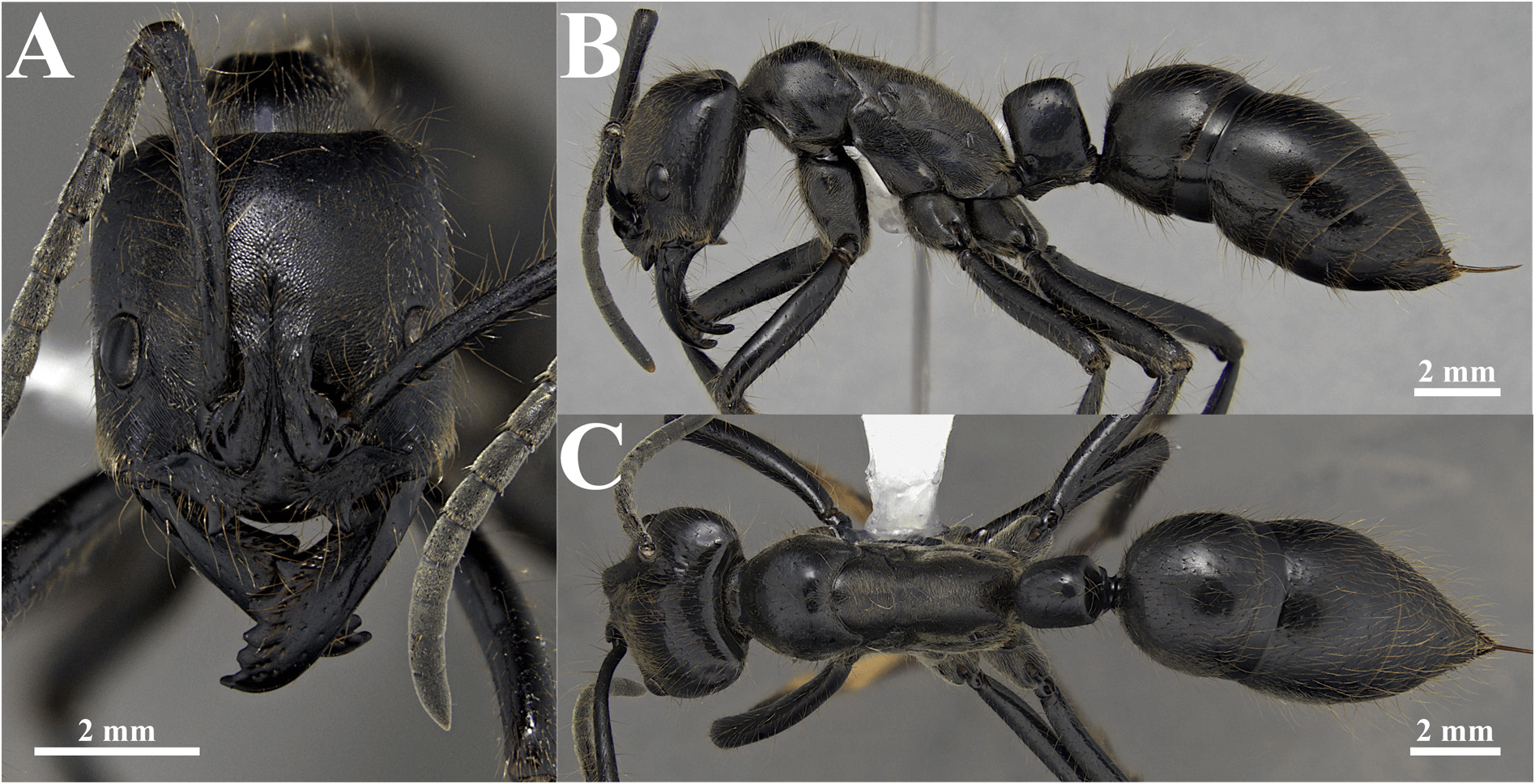Ants are fascinating creatures with an excellent social hierarchy within the colonies. They are known to have a very wide distribution worldwide, with estimates of species being over 12,000 to date. Most of the species are almost the same color, with significant variations in sizes from very minute to abnormally large, the largest of them all being the one called the Giant Amazonian ant.
GIANT AMAZONIAN ANT (Dinoponera gigantea)
The Giant Amazonian ant, bearing in its scientific name Dinoponera gigantea, occupies the line of the record holder as the largest ant species in the whole world. These ants can reach up to about 1.6 inches long. Nowadays, this ant can be found in South America only; the rainforests of that region, even coastal ones, are its new habitat.

Physical Description
The following are the sharply defined physical characteristics of the Giant Amazonian ant:
– Queens: Jet black and considerably larger than males.
– Males: Dark red in color.
– Length: To an extent, these ants can grow up to 1.6 inches, the biggest in the world.
Habitat and Nature
They inhabit hot and damp conditions as found in the South American rainforests and the coastal areas. They usually make their nests under the ground and have short foraging distances away from the nests. These ants are primarily territorial and would fight to the end when encountering other ant species.
Diet
The Diet type of the Giant Amazonian ant is general. It feeds on many plants and insects, including spiders, snails, and crickets. Their diversity of food sources ensures they live in a diversity of habitats.
Other Largest Ant Species
While this ant species is the largest, there are few different species in the few found to be uncommonly large in size:
Bullet Ant (Paraponera clavata)
– Size: Up to 1.2 inches long (3 centimeters)
– Habitat: Found in the Central and South American rain forests.
– Characteristics: They are given the infamous mark because of the venomous sting they possess that is excruciatingly painful compared with the feeling when a person is shot; thus, they are known to people as “bullet ants”.
Carpenter Ant (Camponotus ligniperda)
– Size: 1 inch (2.5 centimeters) long.
– Habitat: They can be found almost anywhere. They prefer nesting in dead wood.
– Characteristics: The amount of zeal with which they start to spoil wood is the main reason why they are treated in the form of pests in urban areas.
Dinoponera Quadriceps
– Size: The length can go up to 0.8 inches (2 centimeters).
– Habitat: Warm and wet forests of Brazil.
– Features: Unique in not having a clear separation of castes and almost all females being able to reproduce.
Banded Sugar Ant (Camponotus consobrinus)
– Size: 1.5cm or 0.6 inches.
– Habitat: It is native to Australia and occurs in natural and urban environments—features : Black and heads with orange bands in the middle section.
Black Carpenter Ant (Camponotus pennsylvanians)
– Size: 1.2 cm, 0.48 in.
– Habitat: Eastern and Central America, Canada.
– Characteristics: Not venomous, but they bite and spray formic acid.
What Did We Learn Today?
The Giant Amazonian ant is the largest in the world, attaining a maximal size of 1.6 in. It is endemic in South America and representative of the incredible diversity within the ant world. Likewise, other giant ants indicate fantastic variety in the family Formicidae. Understanding these remarkable insects helps us appreciate their complexity and the natural adaptability of ants, who continue to thrive in almost every corner of the globe.





